Best Materials for a Flat Roof: Expert Recommendations
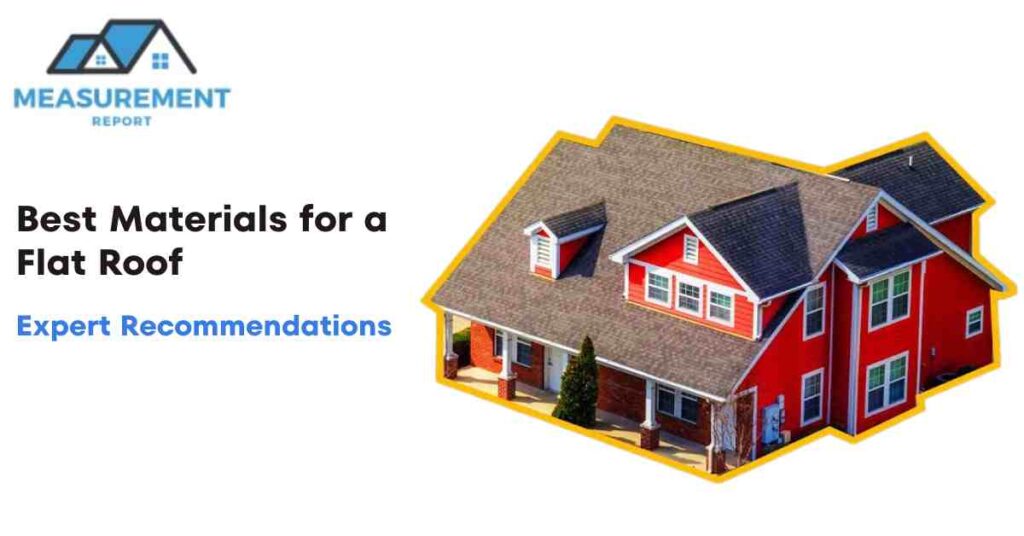
Flat roofs have become a hallmark of modern architecture, both in commercial and residential buildings. Their sleek, horizontal design not only offers a contemporary aesthetic but also serves practical purposes, making them a popular choice for many. However, the real challenge lies in selecting the right materials for these flat roofs, a decision that significantly impacts their longevity, functionality, and overall maintenance.
The significance of choosing appropriate materials cannot be overstated. Flat roofs, unlike their pitched counterparts, demand materials that provide superior water resistance and durability, owing to their minimal slope. In commercial buildings, flat roofs are often essential for housing equipment such as HVAC systems, while in residential settings, they provide a unique, modern look and sometimes double as living spaces. Therefore, the materials used must not only withstand the environmental rigors but also align with the building’s architectural needs.
As we delve deeper into the world of flat roofing materials, we’ll explore various options like Built-Up Roof (BUR), Modified Bitumen, Rubber Membrane (EPDM), Thermoplastic Olefin (TPO), Polyvinyl Chloride (PVC), and more. Each material comes with its own set of advantages and challenges, catering to different requirements in terms of climate resilience, durability, cost-effectiveness, and ecological impact.
Types of Flat Roof Materials
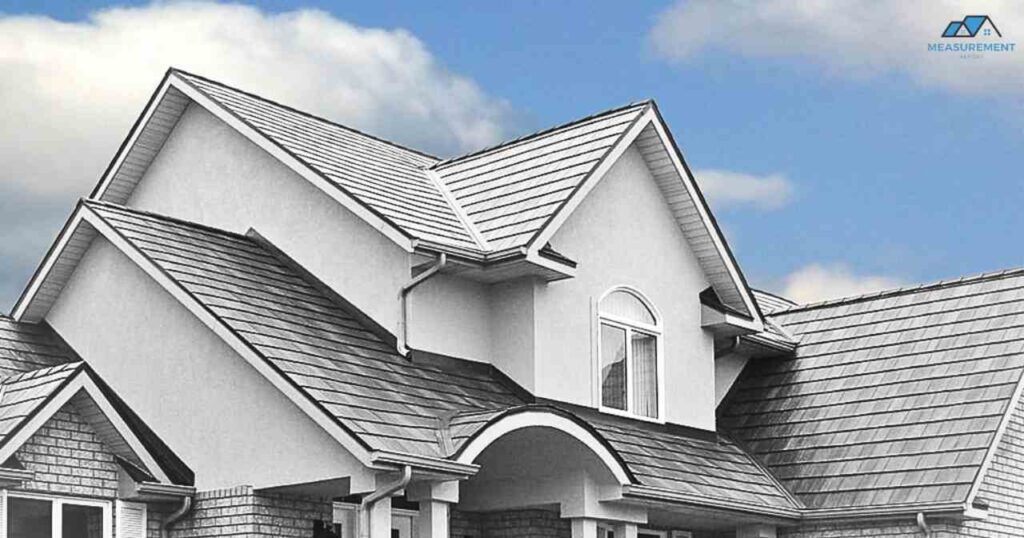
1. Built-Up Roof (BUR)
Description and Traditional Use: Built-Up Roofing, commonly known as BUR, is one of the oldest and most reliable methods for flat roofing. It is constructed with multiple layers of bitumen (asphalt or tar) and reinforcing fabrics called roofing felts or ply sheets. These layers are ‘built-up’ on the roof to create a continuous sealed surface. Traditionally, the top layer of a BUR is often a layer of stone or gravel, which provides an additional protective barrier against the elements.
BUR has been a go-to choice for commercial buildings for decades due to its proven track record. Its application in commercial settings is largely due to its ability to withstand heavy foot traffic and provide a robust barrier against water and weather. In residential buildings, BUR is chosen for its classic appearance and its ability to integrate with various architectural styles, particularly in homes that favor a more traditional aesthetic.
Durability and Cost: The durability of BUR is one of its most notable attributes. When properly installed and maintained, a BUR flat roof can last anywhere from 15 to 30 years. Its longevity is a testament to its robustness in the face of harsh weather conditions, UV rays, and even minor structural movements.
The cost of a BUR system can vary depending on factors such as the number of layers, the materials used, and the labor involved in the installation. Generally, it is considered a cost-effective option, particularly when taking its lifespan into account. The initial investment might be higher compared to some other roofing materials, but the long-term benefits of its durability often offset the upfront costs.
Additionally, BUR provides excellent insulation, which can lead to energy savings over time. However, it’s important to consider that the installation of a BUR system is labor-intensive and requires skilled professionals. This aspect can contribute to the overall cost but is crucial for ensuring the roof’s longevity and effectiveness.
BUR remains a popular choice for flat roofs due to its durability, cost-effectiveness, and traditional appeal. Its multi-layer construction offers a dependable solution for those looking for a long-lasting roofing system.
2. Modified Bitumen

Composition and Heat-Resistant Properties: Modified Bitumen roofing is a modern take on the classic built-up roof, designed to offer greater flexibility and durability. This material is essentially bitumen (asphalt) that has been modified with polymers or rubber additives, enhancing its tensile strength and resistance to environmental factors. The most common modifiers used are APP (Atactic Polypropylene) and SBS (Styrene-Butadiene-Styrene), each lending different properties to the roofing material.
The composition of modified bitumen allows it to expand and contract effectively, reducing the risk of cracking in fluctuating temperatures. This elasticity, particularly in SBS-modified bitumen, makes it an excellent choice for areas experiencing wide temperature swings. Moreover, these roofs are known for their superb heat-resistant properties. They can reflect UV rays and heat, making them energy-efficient choices that can help reduce cooling costs, especially in warmer climates.
Installation Methods and Lifespan: Modified Bitumen can be installed using several methods, with the two most common being torch-down application and cold adhesive application. The torch-down method involves heating the underside of the bitumen sheet with a torch as it is rolled out, creating a strong, waterproof bond as it cools and solidifies. On the other hand, the cold adhesive method is a safer and more environmentally friendly option that uses a solvent-based adhesive to secure the sheets.
Another increasingly popular method is the self-adhering system, which involves sheets that come with a pre-applied adhesive layer protected by a release film. This method eliminates the need for open flames or adhesives, making the installation process cleaner and safer.
In terms of lifespan, a properly installed modified bitumen roof can last between 20 to 30 years, depending on the environment and maintenance. This impressive lifespan, combined with its relatively straightforward installation process, makes it a favored choice for both residential and commercial flat roofs.
Regular maintenance, such as inspections and cleaning, can further extend the life of a modified bitumen roof, ensuring it remains a cost-effective and reliable roofing solution. Its blend of traditional and modern roofing technologies offers a practical choice for those seeking a durable, adaptable, and efficient flat roofing material.
3. Rubber Membrane (EPDM)
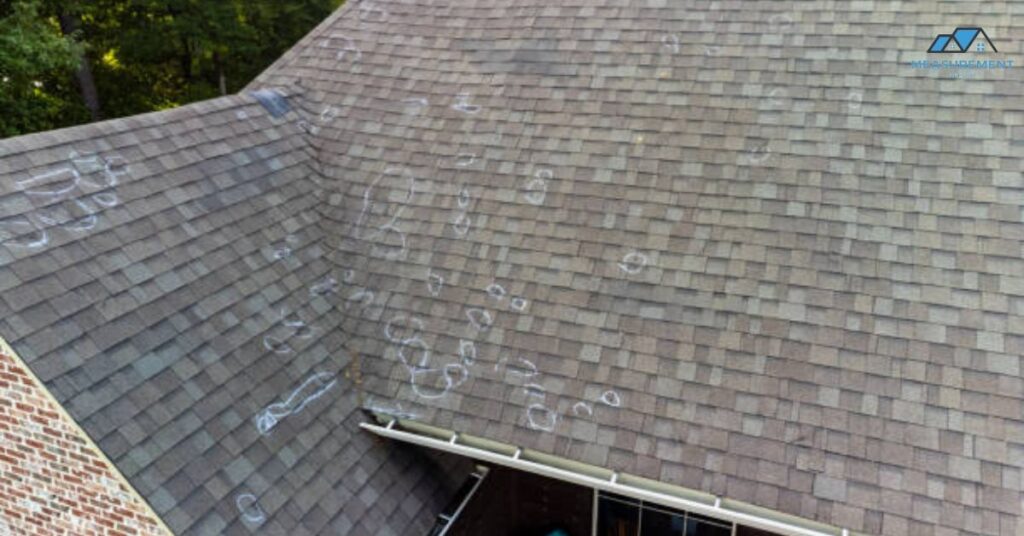
Benefits in Terms of Durability and Ease of Maintenance: Ethylene Propylene Diene Monomer (EPDM) roofing, commonly known as rubber membrane roofing, is renowned for its durability and minimal maintenance requirements. Made from a synthetic rubber compound, EPDM roofs are specifically designed to withstand a variety of environmental stresses, making them one of the most enduring roofing materials available.
One of the key advantages of EPDM roofing is its resistance to weathering, UV rays, and ozone. It does not easily crack or become brittle over time, which is a common issue with some other roofing materials. This resilience contributes significantly to the long lifespan of EPDM roofs, often exceeding 30 years with proper installation and care.
Maintenance for EPDM roofing is typically straightforward. Regular inspections and cleaning to remove debris are usually sufficient to maintain its integrity. The material is also resistant to moss and algae growth, further reducing the need for frequent maintenance. In the event of a puncture or tear, repairs are generally simple and involve applying a patch of EPDM material with an adhesive, which most property owners can do without professional assistance.
Suitability for Various Climates: EPDM’s versatility across different climates is another one of its strengths. It performs exceptionally well in both extreme heat and cold, maintaining its flexibility and not succumbing to thermal shock. This flexibility prevents it from cracking in cold weather, a vital feature for roofing materials in colder regions.
In hot climates, though traditionally black in color, which can absorb heat, EPDM is also available in white or light-colored variants that reflect sunlight, contributing to improved energy efficiency by reducing cooling costs. This adaptability makes EPDM a suitable choice for a wide range of geographic locations.
Furthermore, EPDM’s ability to handle moist conditions, including rain and snow, without deteriorating or leaking, makes it a reliable option for areas with high precipitation. Its water resistance also helps in preventing rot and mildew, ensuring the structural integrity of the building.
EPDM’s combination of durability, low maintenance requirements, and climate adaptability makes it a top contender for those seeking a long-lasting and efficient flat roofing solution. Its ease of repair and installation further adds to its appeal for both residential and commercial applications.
4. Thermoplastic Olefin (TPO) and Polyvinyl Chloride (PVC)
Comparison of Their Chemical and Puncture Resistance: Thermoplastic Olefin (TPO) and Polyvinyl Chloride (PVC) are two of the most advanced flat roofing materials, each offering unique benefits, particularly in terms of chemical and puncture resistance.
TPO roofing, a relatively newer entrant in the market, is made from a blend of polypropylene and ethylene-propylene rubber. This composition grants it excellent resistance to punctures, tears, and impacts, making it a robust choice for areas prone to heavy foot traffic or where falling debris is a concern. TPO’s resistance to oils, fats, and some acids also makes it an ideal option for buildings that house restaurants or other businesses where these substances may be present.
PVC roofing, on the other hand, has long been valued for its superior resistance to chemicals. This material, made from polyvinyl chloride and added plasticizers for flexibility, is highly resistant to a variety of chemicals, including oils, greases, and some solvents. This makes it a preferred choice for industrial applications or facilities where chemical exposure is a possibility. While PVC is also puncture-resistant, it is generally considered slightly less impact-resistant compared to TPO.
Energy Efficiency and Environmental Impact: Both TPO and PVC roofs are known for their energy-efficient properties. They are commonly available in lighter colors, including white, which significantly reflect sunlight and UV rays. This reflectivity reduces the heat absorbed by the building, thereby lowering cooling costs and energy consumption, especially in warmer climates.
In terms of environmental impact, both materials present advantages and considerations. TPO, due to its newer composition, is often promoted as being more environmentally friendly. It does not contain chlorine, a component in PVC that raises environmental concerns during both production and disposal. TPO’s lightweight nature also means less material is used, and it can be fully recyclable at the end of its life cycle.
PVC, while containing chlorine, often includes recycled content in its production, and it can also be recycled at the end of its lifespan. Additionally, the durability and longevity of PVC contribute positively to its environmental impact by reducing the frequency of roof replacements.
In conclusion, both TPO and PVC offer excellent choices for flat roofing with their own strengths in chemical and puncture resistance, energy efficiency, and environmental considerations. The selection between the two often depends on the specific needs and circumstances of the building, including climate, exposure to chemicals, and ecological preferences.
5. Spray-On Roofing
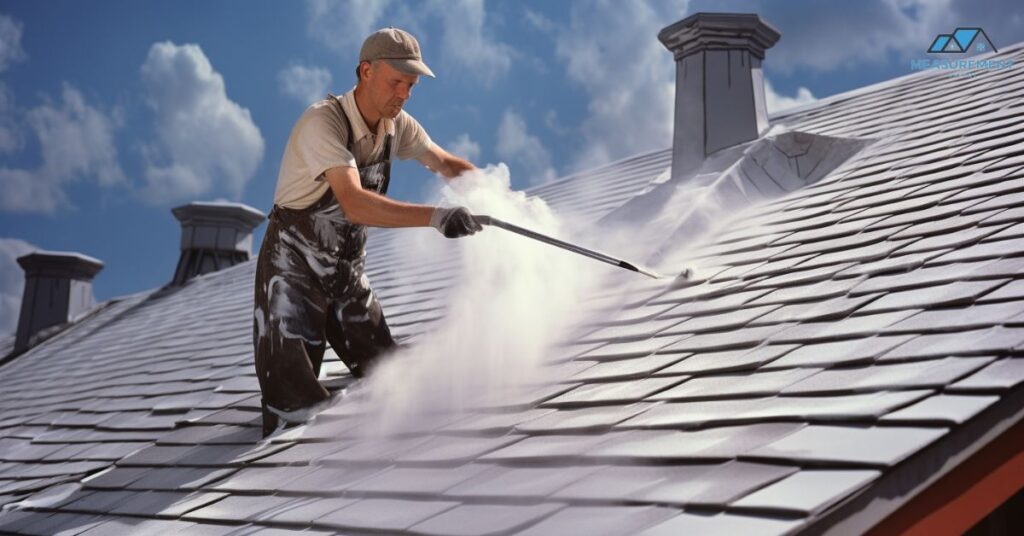
Advantages in Insulation and Waterproofing: Spray-on roofing, encompassing materials like silicone and polyurethane foam, offers innovative solutions for flat roofs, particularly in terms of insulation and waterproofing. This roofing type involves applying a liquid material that expands and hardens into a solid layer, creating a seamless, watertight barrier over the roof.
One of the primary advantages of spray-on roofing is its exceptional insulation properties. Polyurethane foam, for instance, has one of the highest R-values (a measure of thermal resistance) among roofing materials. This high R-value means superior insulation, leading to significant energy savings by reducing heating and cooling costs. The seamless nature of the foam also eliminates thermal bridging, where heat or cold could otherwise seep through joints or seams in other roofing types.
In terms of waterproofing, the continuous, monolithic layer formed by spray-on roofing leaves no seams or joints, areas that are often vulnerable to leaks in other roofing systems. This characteristic makes it exceptionally effective at preventing water infiltration, an essential quality for flat roofs that are more prone to pooling water.
Types and Application Methods: The two most common types of spray-on roofing are Silicone and Polyurethane Foam.
- Silicone Roof Coatings: Silicone is known for its durability and weather resistance. It is particularly effective in climates with heavy rain or extreme temperatures, as it remains stable and maintains its elasticity under varying weather conditions. Silicone coatings are applied in liquid form directly onto the existing roof, reducing the need for tear-offs and making it a more sustainable option. It’s ideal for rejuvenating older roofs, extending their lifespan significantly.
- Polyurethane Foam Roofing: This type involves spraying a mixture that expands into foam, creating a solid, lightweight, and insulative layer. It’s particularly beneficial for roofs with irregular shapes or numerous protrusions, as the foam can be applied uniformly over the entire surface, ensuring comprehensive coverage.
The application process for both types requires specialized equipment and expertise. The roof surface must be clean and dry before application. The material is then sprayed on in layers, with each layer needing to dry before the next one is applied. The thickness can be adjusted to achieve desired insulation levels, and a protective topcoat is often applied to shield against UV rays and physical damage.
In conclusion, spray-on roofing, with its robust insulation and waterproofing capabilities, offers a versatile and efficient solution for flat roofs. Its suitability for a range of climates and roof types, along with the benefits of extending the life of existing roofs, makes it an attractive option for both new constructions and roof refurbishments.
Factors to Consider When Choosing Materials
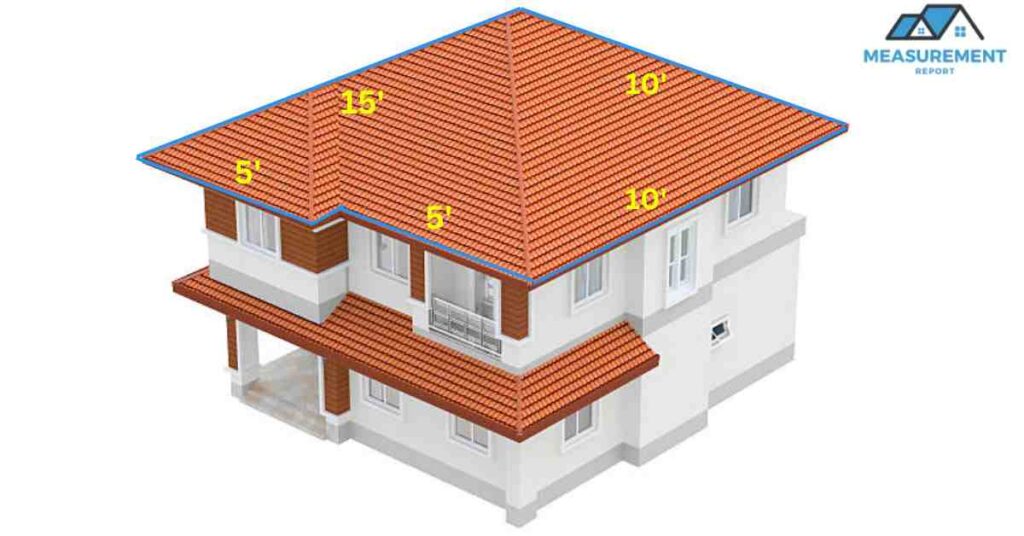
Selecting the right material for a flat roof is a decision that requires careful consideration of various factors. The climate, durability, maintenance, cost-effectiveness, and environmental impact of the materials are crucial aspects to evaluate.
Impact of Climate on Material Selection:
The climate of the area where the building is located plays a significant role in material selection. For instance:
- In areas with high temperatures and intense sunlight, materials like TPO and white or light-colored EPDM, known for their UV resistance and reflective properties, can be highly effective.
- In regions prone to heavy rain or snow, options like PVC and spray-on roofing, which offer excellent waterproofing, should be considered.
- For climates with wide temperature fluctuations, materials like EPDM and modified bitumen, which maintain their flexibility and integrity in varying temperatures, are advisable.
Understanding the local weather patterns and environmental conditions is essential to choose a material that will not only last but also perform efficiently under those specific circumstances.
Comparing the Durability and Maintenance of Each Material:
The longevity and maintenance requirements of roofing materials vary significantly:
- BUR and modified bitumen are known for their durability, often lasting up to 30 years, but may require more maintenance than other options.
- EPDM roofs are also long-lasting with minimal maintenance needs, making them a cost-effective choice over time.
- TPO and PVC, while durable, might have different maintenance needs depending on the installation and local climate.
- Spray-on roofing solutions, with their seamless application, tend to have lower maintenance needs, but the longevity can vary depending on the type and quality of the coating used.
Assessing the maintenance needs and potential longevity can help in selecting a roofing material that aligns with the building owner’s preferences for upkeep and long-term investment.
Analyzing Cost-Effectiveness and Eco-Friendliness:
Cost-effectiveness is not just about the initial installation cost but also includes long-term savings in maintenance and energy efficiency:
- Materials like EPDM and TPO are cost-effective in the long run due to their durability and energy-saving properties.
- BUR, while initially more affordable, may incur higher maintenance costs over its lifespan.
- Spray-on roofing can be a cost-saving option, particularly when applied over existing roofing, reducing waste and refurbishment costs.
Additionally, the environmental impact of roofing materials is increasingly important:
- TPO is often highlighted for its eco-friendly properties, including recyclability.
- PVC, despite concerns about its production, often includes recycled content and can also be recycled at the end of its life.
- EPDM’s longevity and energy efficiency contribute to its environmental friendliness.
In summary, when choosing materials for a flat roof, it’s important to consider the specific climate of the area, compare the durability and maintenance requirements of each option, and analyze their cost-effectiveness and environmental impact. These factors collectively determine the suitability and overall value of the roofing material for a specific project.
Installation and Maintenance
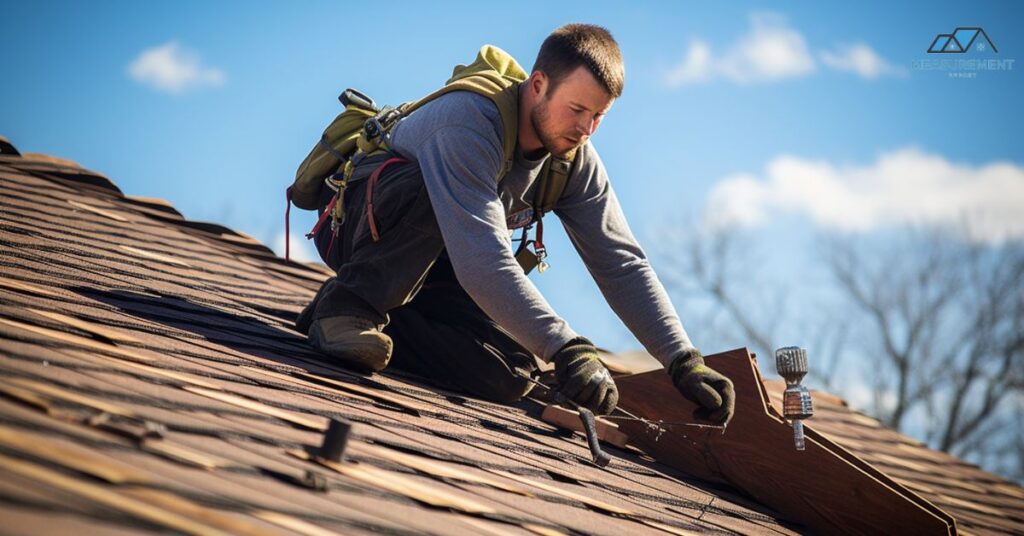
The Importance of Professional Installation for Ensuring Durability:
Professional installation is crucial for the longevity and effectiveness of a flat roof. Experienced roofing contractors have the knowledge and tools necessary to ensure that the roofing material is installed correctly and efficiently. Key reasons to opt for professional installation include:
- Expertise in Handling Materials: Different roofing materials require specific handling and installation techniques. Professionals are trained to deal with these nuances, ensuring the material’s integrity is maintained during installation.
- Ensuring Proper Sealing and Waterproofing: One of the main challenges with flat roofs is preventing water infiltration. Professional installers understand how to create seamless, watertight barriers, crucial for long-term durability.
- Adherence to Building Codes and Standards: Professionals are familiar with local building codes and industry standards, ensuring that the installation complies with all regulations and requirements.
Common Installation Challenges and Mistakes:
Even for experienced professionals, certain challenges and common mistakes can arise during the installation of flat roofs:
- Improper Slope Creation: Flat roofs require a slight slope to facilitate water drainage. Failure to create this slope can lead to water pooling and subsequent roof damage.
- Inadequate Sealing at Joints and Edges: One of the most common mistakes is insufficient sealing at the roof’s joints and edges, which can lead to leaks.
- Mismatching Material and Climate Needs: Selecting a material unsuitable for the local climate can lead to premature deterioration.
Regular Maintenance Tips for Longevity:
Regular maintenance is key to extending the lifespan of a flat roof:
- Routine Inspections: Conduct bi-annual inspections (typically in spring and fall) to check for signs of damage, such as cracks, blisters, or punctures.
- Debris Removal: Keep the roof free from debris, leaves, and branches, which can cause blockages and retain moisture.
- Drainage Maintenance: Ensure that drainage systems are clear and functioning properly to prevent water pooling.
- Immediate Repairs: Address any damage or leaks immediately to prevent them from worsening.
- Surface Cleaning: Periodically clean the roof surface to prevent the growth of algae or moss, which can damage the roofing material over time.
Proactive maintenance not only extends the life of the roof but also helps in identifying potential issues before they become major problems. Combining professional installation with regular maintenance creates a durable and reliable flat roofing system, offering peace of mind and long-term savings.
Advantages and Disadvantages of Key Materials
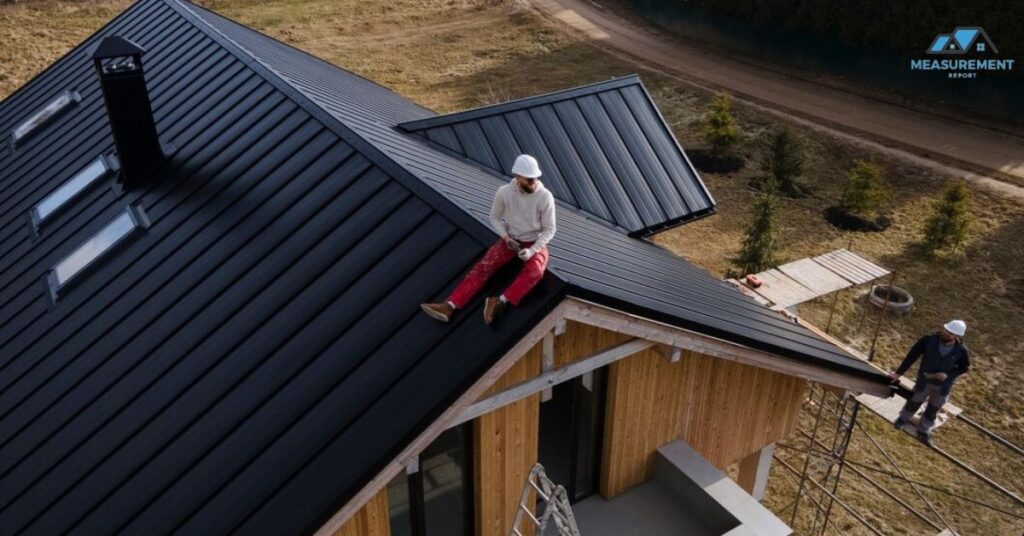
EPDM (Ethylene Propylene Diene Monomer)
Pros:
- Durability: Highly resistant to weathering, UV rays, and extreme temperatures.
- Low Maintenance: Requires minimal upkeep beyond regular inspections and cleaning.
- Flexibility: Maintains elasticity in cold temperatures, reducing the risk of cracking.
- Cost-Effective: Offers a good balance between upfront cost and lifespan.
Cons:
- Aesthetic Limitations: Generally available only in black, which may not suit all architectural styles.
- Heat Absorption: Can absorb heat in its standard black form, potentially increasing cooling costs.
- Vulnerability to Punctures: More susceptible to punctures than some harder materials.
Real-Life Application: Ideal for buildings in areas with fluctuating temperatures and for owners looking for a balance between cost and longevity.
TPO (Thermoplastic Olefin)
Pros:
- Energy Efficiency: Reflective surface helps in reducing cooling costs.
- Chemical Resistance: Resistant to oils, fats, and certain chemicals.
- Ease of Installation: Lightweight and easy to install.
- Eco-Friendly: Free from chlorine and can be recycled.
Cons:
- Inconsistency in Quality: Variations in quality between manufacturers.
- Temperature Sensitivity: May not perform as well in extremely high temperatures.
- Longevity Concerns: Newer in the market, so long-term performance data is less available.
Real-Life Application: Suitable for commercial buildings, especially those requiring chemical resistance, such as restaurants or manufacturing facilities.
PVC (Polyvinyl Chloride)
Pros:
- Chemical Resistance: Excellent resistance to chemicals, making it ideal for industrial settings.
- Durability: Proven track record of longevity and performance.
- Fire Resistance: Self-extinguishing properties make it a safer choice.
- Waterproofing: Highly effective in preventing leaks.
Cons:
- Cost: Generally more expensive than TPO and EPDM.
- Environmental Concerns: Contains chlorine, raising environmental concerns during production and disposal.
- Brittleness with Age: Can become brittle and lose flexibility over time, especially in colder climates.
Real-Life Application: Best for buildings that require strong chemical resistance and where budget allows for a higher initial investment.
Advantages and Disadvantages in Context:
Each material has its unique set of pros and cons, making them suitable for different real-life scenarios. The choice often depends on factors like climate, building use, environmental considerations, and budget. For instance, EPDM might be the go-to for a cost-conscious residential project, while PVC could be the preferred choice for an industrial facility needing chemical resistance. TPO, being eco-friendly and energy-efficient, might be selected for newer commercial buildings focusing on sustainability.
Cost Analysis
Understanding the cost implications of different roofing materials is crucial for making an informed decision. This analysis includes both the initial installation costs and the long-term expenses associated with maintenance and potential energy savings.
Initial and Long-term Costs for Each Material
- EPDM Roofing:
- Initial Cost: Relatively low, making it one of the most cost-effective options for flat roofing. The cost can vary based on thickness and quality of the material.
- Long-term Cost: Due to its durability and low maintenance requirements, the long-term costs are generally lower compared to other materials.
- TPO Roofing:
- Initial Cost: Comparable to or slightly higher than EPDM, depending on the brand and installation specifics.
- Long-term Cost: Energy efficiency can lead to significant savings on cooling costs. Maintenance and repair costs are typically moderate.
- PVC Roofing:
- Initial Cost: Generally higher than both EPDM and TPO, reflecting its superior chemical resistance and longevity.
- Long-term Cost: Despite the higher initial investment, PVC’s durability can make it cost-effective over time. Maintenance costs are similar to TPO.
- Modified Bitumen and BUR:
- Initial Cost: Varies, with BUR generally being more expensive due to labor-intensive installation.
- Long-term Cost: Can be higher due to more frequent maintenance and repair needs.
- Spray-On Roofing:
- Initial Cost: Can be cost-effective, especially when applied over an existing roof, as it reduces the need for removal and disposal.
- Long-term Cost: Energy efficiency and the potential for extending the life of an existing roof add to its cost-effectiveness.
Comparison Between TPO and PVC Roofing Costs
- Initial Installation Cost: TPO is often slightly less expensive than PVC. This difference can be attributed to the material composition and the installation process.
- Durability and Lifespan: PVC typically has a longer lifespan, which can offset its higher initial cost over time.
- Energy Efficiency: Both materials are energy-efficient, but TPO’s lighter colors and better reflectivity can offer more savings in cooling costs, especially in warmer climates.
- Maintenance: Both require similar maintenance, but PVC’s higher resistance to chemicals and punctures can translate to lower repair costs in certain environments.
In conclusion, when comparing the costs of these materials, it’s important to consider not just the upfront expenses but also the long-term financial implications, including maintenance, energy savings, and lifespan. The choice between TPO and PVC, for instance, might hinge on specific requirements and priorities, such as chemical resistance, energy efficiency, or budget constraints.
Case Studies and Real-World Applications
Examining real-world examples and gathering insights from professionals in the field can provide a practical perspective on the performance and suitability of different roofing materials in various settings.
Examples of Different Materials in Various Climates and Buildings
- EPDM in Cold Climates:
- Case Study: A residential complex in the Northeastern U.S. opted for EPDM roofing. The material’s flexibility in freezing temperatures and resistance to snow and ice made it an ideal choice. Over years, the roof has shown minimal signs of wear and has required very little maintenance, validating the decision.
- TPO in Hot and Sunny Climates:
- Case Study: A commercial building in the Southwestern U.S. chose TPO for its reflective properties, significantly reducing the building’s cooling costs. The material has endured intense sun exposure without deteriorating, showcasing its suitability for hot climates.
- PVC in Industrial Settings:
- Case Study: An industrial facility with a high concentration of oils and chemicals in the air installed a PVC roof. Its chemical resistance has protected the roof from degradation, a common issue in such environments, proving its efficacy for industrial applications.
- Spray-On Roofing for Irregular Roof Structures:
- Case Study: A building with multiple protrusions and irregular architecture utilized spray-on roofing. The ability to create a seamless layer over a complex structure demonstrated the versatility and effectiveness of this material in challenging designs.
- Modified Bitumen in Urban Settings:
- Case Study: A city building with heavy foot traffic on the roof (for maintenance and recreational purposes) successfully used modified bitumen. Its durability against foot traffic and urban environmental conditions has made it a sustainable choice.
These case studies and expert insights highlight the practical applications and benefits of different roofing materials in various scenarios. They underscore the importance of considering the specific needs of the building and its environment when selecting a roofing material.
Advancements in Roofing Materials
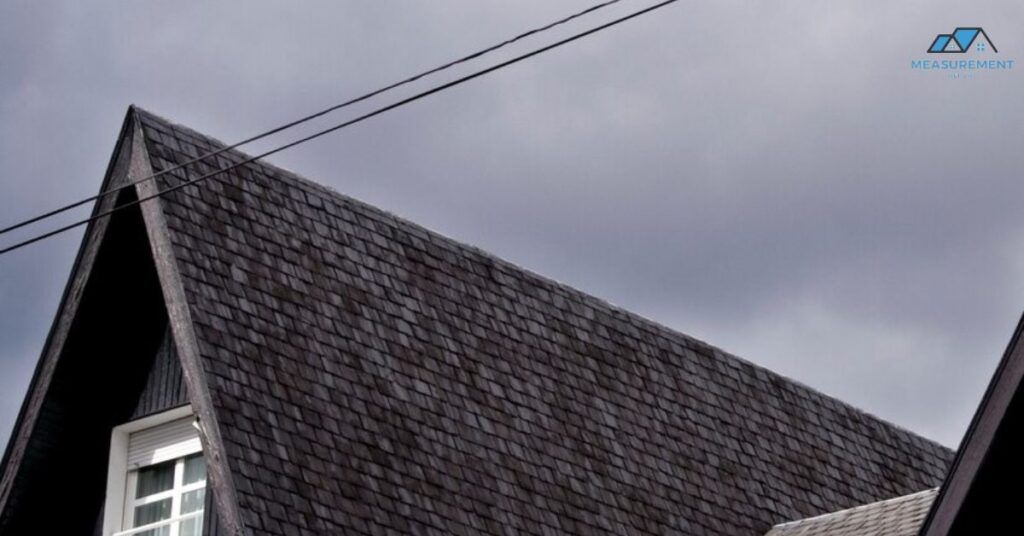
The roofing industry has seen significant advancements in recent years, driven by technological innovation and a growing emphasis on sustainability and energy efficiency. Understanding these developments can help in making informed decisions about roofing materials.
Innovations Like Solar-Reflective Coatings
One of the most notable advancements is the development of solar-reflective coatings. These coatings can be applied to various roofing materials to enhance their reflective properties, thereby reducing heat absorption. Here’s how they work:
- Reduced Cooling Costs: By reflecting sunlight, these coatings help lower the surface temperature of the roof, which in turn reduces the heat entering the building and lowers air conditioning requirements.
- Extended Roof Lifespan: The coatings protect the roof from UV radiation and thermal cycling, which can cause materials to degrade over time.
- Sustainability: Solar-reflective coatings contribute to a building’s overall energy efficiency, making them an environmentally friendly option.
These coatings are particularly beneficial in areas with high temperatures and intense sunlight, where cooling costs constitute a significant portion of energy expenses.
Future Trends and Developments in Flat Roofing Materials
- Eco-Friendly Materials: As environmental concerns continue to grow, the trend towards eco-friendly roofing materials is gaining momentum. Materials that are recyclable and have a lower environmental footprint during production and disposal are becoming increasingly popular.
- Integrated Solar Technology: There’s a growing interest in materials that can integrate solar technology, such as photovoltaic (PV) cells. This integration allows roofs to not only protect the building but also generate electricity, adding a new dimension to the functionality of roofing.
- Smart Roofing Solutions: The future of roofing also includes the incorporation of smart technology. Materials that can change their properties based on environmental conditions, such as temperature-responsive coatings, are being developed. Additionally, roofing systems equipped with sensors to monitor health and performance are on the horizon.
- Advanced Waterproofing and Insulation Techniques: Advancements in waterproofing technologies and improved insulation materials are continually being developed. These innovations aim to enhance the energy efficiency and durability of flat roofs, particularly in challenging climates.
- Lightweight and Durable Composites: Research is ongoing into new composite materials that are both lightweight and highly durable. The goal is to reduce the structural load on buildings while ensuring long-term durability and resistance to environmental factors.
These advancements represent a significant leap forward in the roofing industry, offering not only improved performance and longevity but also enhanced environmental sustainability. Keeping abreast of these trends and innovations is key for anyone involved in roofing decisions, from architects and builders to property owners.
Choosing the Right Roofing Contractor
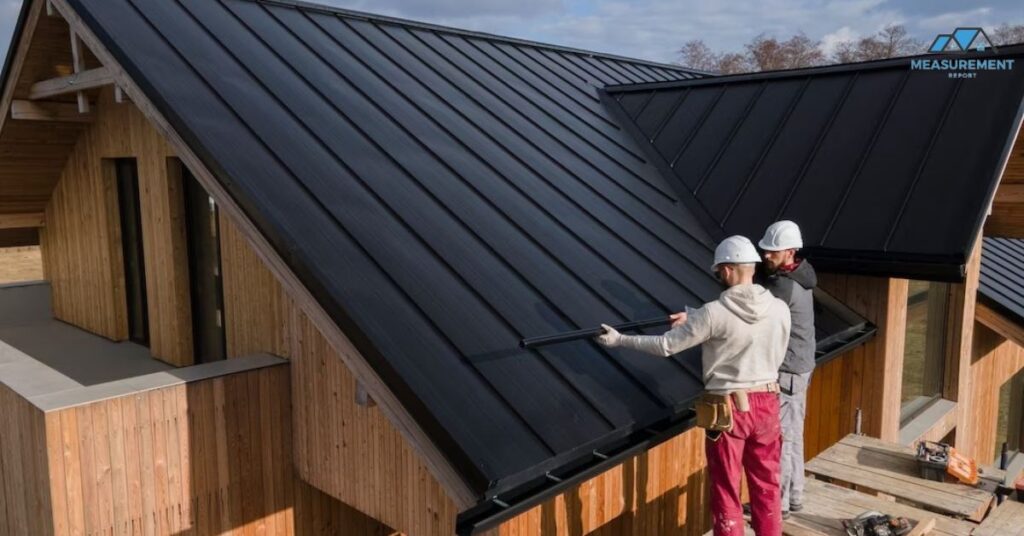
Selecting a reliable roofing contractor is as important as choosing the right materials for your flat roof replacement. A competent contractor ensures that the roofing material is installed correctly and efficiently, maximizing the roof’s longevity and performance. Here are some tips and factors to consider when selecting a roofing contractor:
Tips for Selecting a Reliable Contractor
- Check for Licensing and Insurance: Ensure the contractor is licensed to work in your area and carries insurance. This protects you from liability in case of accidents or injuries during the project.
- Experience with Flat Roofing: Look for contractors who specialize in or have extensive experience with flat roofing. Different roofing types require different expertise, and flat roofs have specific challenges and nuances.
- References and Portfolio: Ask for references and a portfolio of previous work. This will give you an insight into their experience and the quality of their work. Follow up with their references to gauge customer satisfaction.
- Warranties and Guarantees: Inquire about the warranties offered both on materials and the installation work. A contractor confident in their work will provide substantial warranties.
- Detailed Written Estimate: A reliable contractor will provide a detailed written estimate outlining the scope of the project, materials to be used, timelines, and costs. This helps avoid unexpected expenses and misunderstandings.
- Local Knowledge: A local contractor will be familiar with the regional climate and building codes, which is crucial for ensuring your roof is suitable for your area and compliant with local regulations.
Factors to Consider in Contractor Selection
- Reputation: Research the contractor’s reputation in the industry. Online reviews, testimonials, and ratings on independent platforms can provide valuable insights.
- Communication Skills: Effective communication is key. Choose a contractor who is responsive, answers your questions clearly, and keeps you informed throughout the project.
- Post-Installation Services: Consider their policy on post-installation services and emergency repairs. A contractor who offers ongoing support is preferable.
- Cost: While cost is a significant factor, it shouldn’t be the sole deciding factor. Extremely low bids can sometimes indicate subpar workmanship or inferior materials.
- Contract and Terms: Review the contract thoroughly before signing. Ensure all aspects of the project are clearly outlined, including payment schedules, completion dates, and procedures for handling any changes or unforeseen issues.
Choosing the right contractor is crucial for a successful roofing project. It ensures that your investment in your flat roof is protected and yields the best possible results in terms of quality, durability, and performance.
Conclusion
Navigating the world of flat roofing materials and installations can be a complex task, but with the right information and considerations, you can make a decision that best suits your needs, budget, and circumstances.
Recap of Key Insights
- Material Choices: We explored various materials like EPDM, TPO, PVC, Modified Bitumen, and BUR, each with its unique benefits and drawbacks. Innovations like solar-reflective coatings and advancements in eco-friendly and smart roofing solutions are shaping the future of flat roofing.
- Climate Considerations: The choice of material should align with your local climate, considering factors like temperature extremes, precipitation levels, and sun exposure.
- Durability and Maintenance: Each material has its lifespan and maintenance requirements. It’s crucial to balance the initial cost with long-term maintenance and potential savings.
- Installation and Professional Expertise: The importance of professional installation cannot be overstated, as it significantly impacts the longevity and effectiveness of your roof.
- Cost Analysis: A thorough understanding of both initial and long-term costs, including energy savings and maintenance, will guide you in making a cost-effective choice.
Final Recommendations
When selecting a material for your flat roof, consider the specific needs of your building and the local climate. If energy efficiency is a priority, materials like TPO or light-colored EPDM might be ideal. For buildings in areas with extreme weather conditions, durable options like PVC or Modified Bitumen could offer the resilience you need.
Remember, the cheapest option may not always be the most cost-effective in the long run. Consider the total lifecycle cost of the roof, including maintenance, repairs, and potential energy savings.
Lastly, invest time in choosing the right contractor. Their expertise, experience, and the quality of their workmanship will be pivotal in realizing the full benefits of your chosen roofing material.
In conclusion, your decision should be a blend of practical considerations and personal preferences, ensuring that your flat roof is not only aesthetically pleasing but also functional, durable, and cost-effective. With careful consideration and the right professional guidance, your flat roof can be a long-lasting investment that protects and enhances your property.
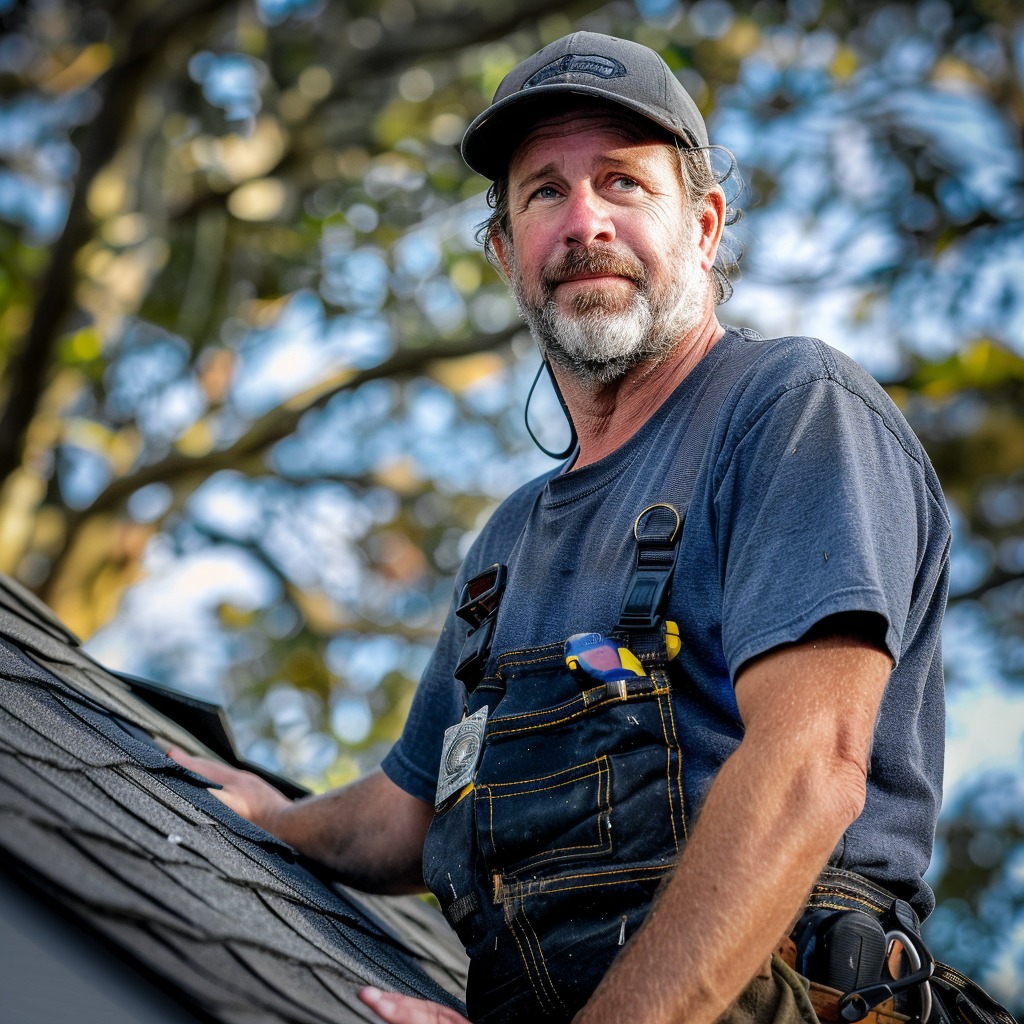
Meet William Adams, a seasoned roofing expert with over 30 years of hands-on experience in the industry. Having worked tirelessly under the scorching sun and through the fiercest storms, William brings a wealth of knowledge and expertise to the table. Hailing from the heart of the USA, he’s witnessed the evolution of roofing practices firsthand, mastering every aspect along the way. Now retired from the field, William spends his days cherishing time with his loved ones while sharing his invaluable insights through this platform. With William at the helm, you can trust that every tip, advice, and recommendation provided is backed by years of real-world experience and unwavering dedication to quality craftsmanship. Join us as we journey through the world of roofing, guided by the wisdom and passion of a true industry veteran.
